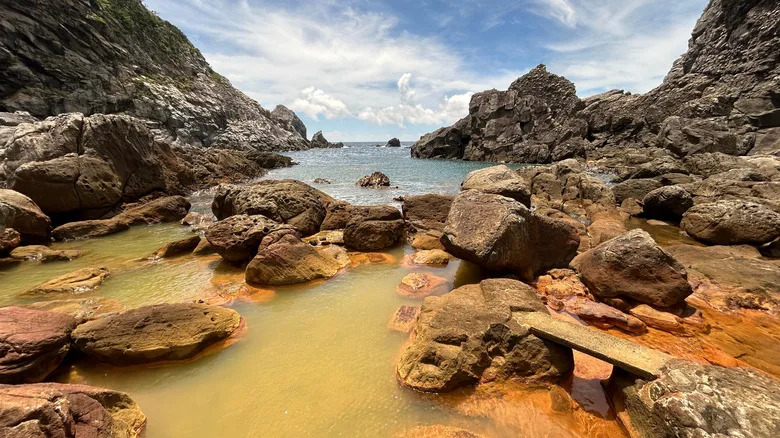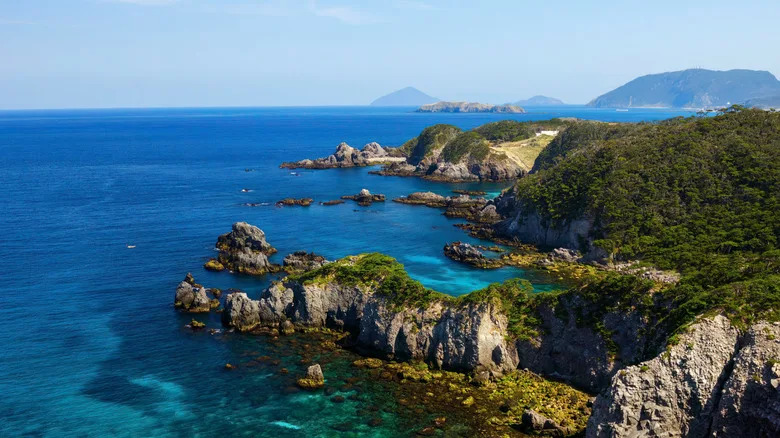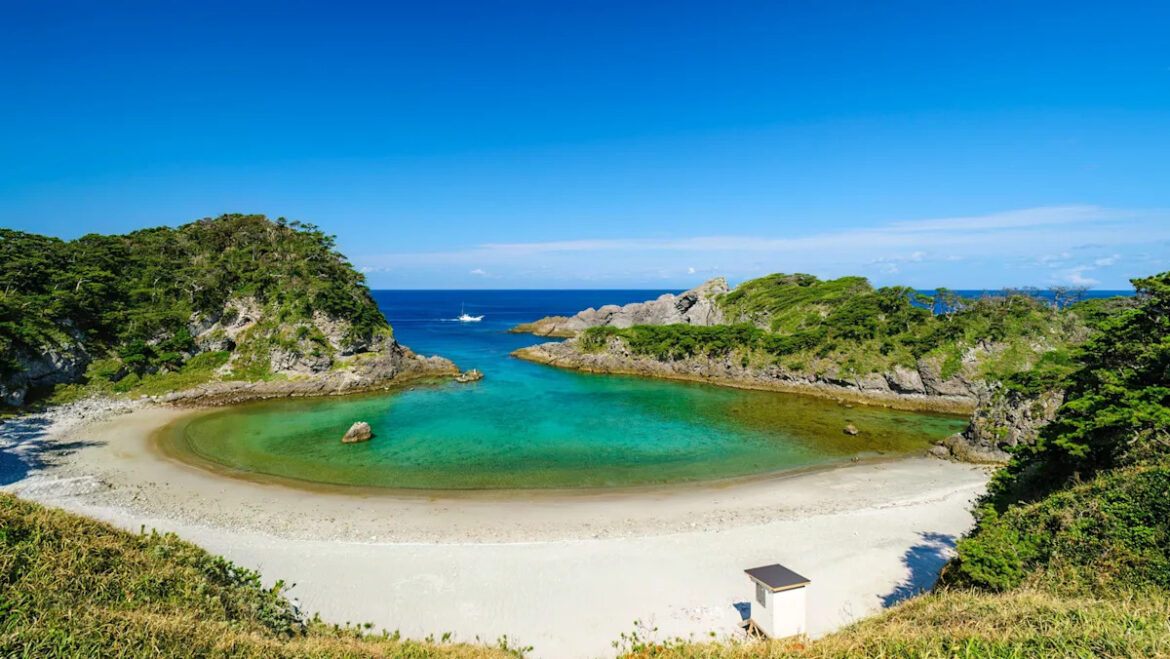Tokyo is known for its delightful contrasts, a stunning destination where one can stumble upon a revered shrine surrounded by 100,000 trees just a 20-minute walk away from the bustling, world-famous Shibuya Crossing — no wonder the city ranked third in data analytics firm Euromonitor International’s top 100 city destinations of 2024. But the city’s reach extends beyond the Tokyo that most travelers are familiar with. Few know that a three-hour ferry ride from Tokyo lies Shikine-jima, a small, low-key island that’s part of the Izu archipelago. Shikine-jima is still technically part of Tokyo’s Ōshima sub-prefecture (so don’t be surprised to see “Tokyo” included in the island addresses.)
This laid-back island gem is one of Tokyo’s best-kept secrets, as its compact 1.5-square-mile footprint packs in a surprising amount of nature-centric activities and adventures for those seeking a respite from the frenetic pace of Japan’s capital. During Japan’s Edo period, the island was uninhabited and used solely as a temporary port for neighboring islands. Following the Meiji restoration era in the late 1800s, residents of Niijima island — no strangers to helping themselves to Shikine-jima’s natural sea and plant resources — petitioned for (and were granted) settlement rights.
As a volcanic island, Shikine-jima is home to several onsen (hot springs) and a rugged ria coastline against which the emerald Philippine Sea waters lap. The island’s numerous peaks and observatories offer plenty of ideal spots for catching breathtaking sunsets, and below the surface of its waters lie abundant marine ecosystems that make for unforgettable snorkeling and diving.
Read more: 25 Gorgeous Islands For Vacationing That Won’t Break The Bank
Dive into the sea or dip into the onsen of Shikine-jima
Reddish brown waters of Jinata Onsen – KKKvintage/Shutterstock
Compared to the choppy, surfer-friendly waves of nearby Niijima Island, Shikine-jima is a hotspot for snorkelers and scuba divers — the island’s indented coastline and crystal-clear waters reveal a stunning underwater tableau of sea creatures, coral reefs, and a landscape of volcanic rock formations. Popular snorkeling spots include the beaches of Nakanoura and Ishijirogawa, located on opposite sides of the island. For a scuba diving experience that highlights Shikine-jima’s volcanic geology, diving in Okama Bay reveals hot sand and bubbles released from hot spring vents on the seafloor, known as carbon dioxide seeps. You’ll also cross paths with stingrays, guitarfish, and sea turtles while you’re down there.
If you’re looking for hot spring destinations with gorgeous views, Shikine-jima is a worthy contender. Several onsen (hot springs) spring from the island’s volcanic nature, and are understandably sought-after destinations for visitors, not just for relaxing but also for their healing properties. Accessed via a steep downhill path, Jinata Onsen feels truly remote and off-grid. Emerging from the rock walls, the hot spring waters mingle with seawater. The iron-rich water is scalding during low tide, so it’s best to time your visit as the sea tide spills into the springs, cooling it down to manageable temperatures. Known as the “Internal Medicine Hot Spring,” locals soak in the iron sulfide-infused waters to ease rheumatism, gastrointestinal, and gynecological issues. In contrast to the reddish-brown waters of Jinata, Ashitsuki Onsen has clear, transparent waters famed for healing scratches, cuts, and other external wounds. The most accessible and convenient onsen on the island is Matsugashita Miyabiyu, a mix of constructed and natural pools with healing waters sourced from Jinata Onsen.
Catch the sunset from Shikine-jima’s observatories
Views of the ria from the Kanbiki Observatory – d3_plus/Shutterstock
As the day winds down, a hike to one of Shikine-jima’s observatories will reward you with views of a gorgeous sunset sinking behind jagged coastlines and clear emerald waters — you may even catch a glimpse of neighboring islands. The Kanbiki Observatory is preferred by sunset-seeking hikers: it’s a bit of a rugged trek to get there, but the panoramic sunset views of beaches, cliffs, and even Mount Fuji on clear days from a near 330-foot perch above sea level are well worth the effort. Within easy reach of the hot springs, the Ashijiyama Observatory offers glimpses of the neighboring Niijima, Miyakejima, and Kozushima islands. The volunteer-built Gunjiyama Observatory is the best-placed lookout point if you find yourself in a central area of the island. From its small wooden deck, one can see Miyakejima and Mikurajima if the weather permits. Keep your eyes peeled for the small wooden sign so as not to miss the tree-obscured entrance.
Tokai Kisen-operated ferries that serve the Izu Islands depart from the Takeshiba Ship Terminal — just descend at JR Hamamatsu-cho Station if you’re coming from central Tokyo. Expect an 11-hour journey aboard a large passenger ship or a speedy four-hour ride via high-speed jet ferry. The quickest (but costliest) option would be to fly to Niijima from Tokyo’s Chofu Airport, then take a ferryboat to Shikine-jima. The combined plane and ferry journey (outside transfer times) clocks in at about an hour. The best time to visit Japan depends on what you want to experience. Shikine-jima in the spring and summer (March to August) is ideal for snorkeling, hiking, and beach lounging. Winter brings strong winds that can cause ferry cancellations. It rarely snows on the island; if it does, that’s what the onsen are there for.
Ready to discover more hidden gems and expert travel tips? Subscribe to our free newsletter and add us as a preferred search source for access to the world’s best-kept travel secrets.
Read the original article on Islands.


AloJapan.com